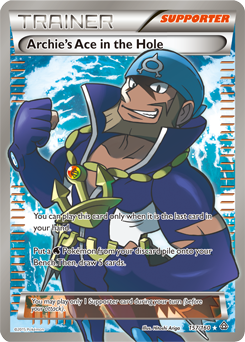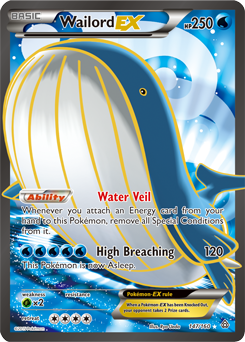Lessons to Learn from Worlds and How to Optimize PTCGO Testing!

Hey guys! It’s been a while since my last article. Worlds has come and past and a new champion, Jacob Van Wagner, has been crowned! Jacob ran an awesome deck that has been talked about a few times, but I just wanted to say again that it was incredible. I played Archie’s Blastoise a little bit during the Boston Open and it was easily the most fun deck I have played in a few years.
However, that’s not why I’m here! Now that the 2016 season format has confirmed the ban of Shiftry for Expanded, it’s a great time to start preparing for the new year, if you haven’t already. One of the best ways to prepare for larger tournaments such as Regionals is to try and figure out what decks will be popular and to practice as much as you can with your own deck. If you are able to accurately predict what the metagame will be for a large event, you will usually do better than if you don’t know what other people will play. However, it can be difficult to figure out what other people will end up playing, because even if there is information out there on what people are expected to play, or what are “safe plays,” people tend to deviate from the safe deck options. One example of this was the 2015 Pokemon World Championships, where there were a few decks that were expected to do well, but those were not the decks that ended up winning. I will try to give you guys some insight into why the player’s who did well picked the decks they did, and how you can learn from that to improve your deck selection at future events. Additionally, I have spent a lot of time playing on the Pokemon Trading Card Game Online (nowhere near my dad who has hit the level cap and token cap, currently 25,000), and I want to explain how it can be used for practicing for major events. Most players don’t use PTCGO to its fullest potential for testing, but I’m going to show you how to get the most out of it in this article!
Worlds Review
U.S. Nationals and Nationals from across the world had shown that there were a lot of decks that had potential to do well at Worlds. The top eight of U.S. Nationals alone had eight unique decks that were all incredibly strong in their own right. This suggested that there would be a lot of strong decks at the World Championships with a wide variety of good and bad matchups. Unfortunately, from a deck selection point of view, a diverse metagame can make it almost impossible to pick the right deck. However, in this format there appeared to be a few front-runners that most people seemed to like a few weeks before Worlds. From talking to other people, and from my own playtesting going into Worlds it seemed to me, and a few others, that decks like Primal Groudon-EX and M Manectric-EX would be popular decks. There was also a lot of hype around a few of the decks that did well at U.S. Nationals such as Kristy Britton’s Seismitoad-EX / Manectric-EX / Crobat deck. These decks seemed to be consistent as well as strong against most decks in the format.
However, the Open Gaming Room at Worlds told a completely different story of what decks would be popular. In the weeks leading up to Worlds, a lot of players realized that if the above decks were popular, some of the decks that had been fading out of the metagame were actually strong picks. One example of this was Night March. Night March was supposed to be the best deck in the format after Lysandre's Trump Card was banned from competitive play, but did not do too well at Nationals because of the rise of Crobat and other decks meant to beat Night March. The decks that did well at U.S. Nationals for the most part had awful Night March matchups, which, leading up to Worlds, people realized, and began testing Night March decks to get them ready for Worlds.
By the end of the first day of Worlds what we saw was that most of the players who had success during Day One played Night March, Groudon-EX, M Manectric-EX, or Seismitoad-EX / Manectric-EX / Crobat. There was also a few players who ended up making Day Two by playing the Archie’s Blastoise deck. This set the stage for Day Two of Worlds, where again the metagame changed a little bit in response to what the players played on Day One of Worlds. The decks that saw the most success Day Two of Worlds were the decks that we saw on stream at the top tables, Archie’s Blastoise, Toad / Bats, Donphan, and Fairy Box. Below, I’m going to try and review these decks from players that did well at the event and try to explain why they were able to do as well as they did at Worlds, starting with the World Champ’s Archie’s Blastoise deck.
Jacob Van Wagner’s Blastoise Deck
Pokemon (14) |
Trainers (35) 2x Archie's Ace in the Hole (PRC #157) 2x Professor Juniper (DEX #98) 1x N (NVI #92)
4x Battle Compressor (PHF #92) 4x Superior Energy Retrieval (PLF #103)
|
Energy (11) |
Similar to Steve Guthrie’s Archie’s Blastoise deck, this is the version that Jacob used to win the 2015 World Championships. Since the basic strategy behind this deck has been discussed before in a few articles, I am just going to talk about the logic behind some of his variations in the list that made his list have slightly better matchups against the decks he expected to see. The first major change he made to this list was to include two cards that made his Night March matchup favorable, Articuno and Wailord-EX.

When I first tested the Archie’s Blastoise deck against Night March, I was not happy with the matchup. It felt like if the Night March player ran super hot and was able to kill your Keldeo-EX within the first two turns of the game you would lose unless you played N and they dead drew for a few turns. This matchup can be explosive and without Articuno it felt like Night March may have actually been slightly favored. With the addition of Articuno, this matchup swung heavily in the favor of Blastoise. The beauty of Articuno against Night March is you can power it up easily and it is able to kill Joltik and Pumpkaboo without needing to get too lucky on its attack. I would usually attach a Muscle Band to ensure I would get the Knock Out even with three tails against Joltik. Trading an Articuno for two Prizes put you really far ahead in the game, and if you were really creative you would be able to use Archie's Ace in the Hole to revive Articuno and get another two Prizes with it. This helped the matchup in that whether you went first or second, the Blastoise deck was favored to win. In other matchups Articuno’s first attack can be critical at shutting down Seismitoad-EX decks. Chilling Sigh can help salvage a game by putting a Toad to sleep and allowing you one turn of Trainers to set up a Blastoise and win the game with a big Keldeo-EX.

Accurately predicting that Night March would be a popular deck at Worlds, Jacob also made an amazing decision to run the tankiest Pokemon in the game in his list, Wailord-EX. In addition to Articuno, Jacob also had the option of promoting Wailord-EX at any point in the game and force his opponent to two-shot it while he was High Breaching his way to victory. These two cards helped to swing a matchup that was close to even to heavily in Blastoise’s favor, which was demonstrated in Jacob’s Top 4 match when he quickly destroyed Night March in one of the fastest matches streamed in the history of Worlds.
The only other special card that Jacob ran in his list was Mewtwo-EX. This card served a couple of purposes, but most importantly it helped to Knock Out other Mewtwo-EX, which Jacob expected players to run to counter any Blastoise decks. Mewtwo was also useful to fight against Seismitoad-EX decks. If you are unable to go off on turn one with Archie’s, it is easy to power up a Mewtwo-EX as an extra attacker to fight against a Toad, even without Blastoise. Mewtwo can also prove to be a powerful attacker in the mirror match, and Jacob probably expected more Blastoise than we saw on Day Two of Worlds because of its explosiveness and his strong performance on Day One.
Next, let’s look at some of the other decks that made Top 8 at Worlds, analyzing all the things that put them ahead of everyone else competing for those top spots. Then, I’m going to share with several tips on how to get the most out of your PTCGO testing. I’ve been using the program for a long time, and there are quite a few ways to use it to its fullest that most players just aren’t taking advantage of. After reading this article, you should be getting a lot more out of your testing on PTCGO!
So are you ready to improve your game right here and right now?
This concludes the public portion of this article.
If you'd like to continue reading, consider purchasing a PokeBeach premium membership! If you're not completely satisfied with your membership, you can request a full refund within 30 days.
Each week we post high-quality content from some of the game's top players. Our article program isn't a corporate operation, advertising front, or for-profit business. We set our prices so that we can pay the game's top players to write the best content for our subscribers. Each article topic is carefully selected, goes through multiple drafts, and is touched up by our editors. We take great pride in our program!

